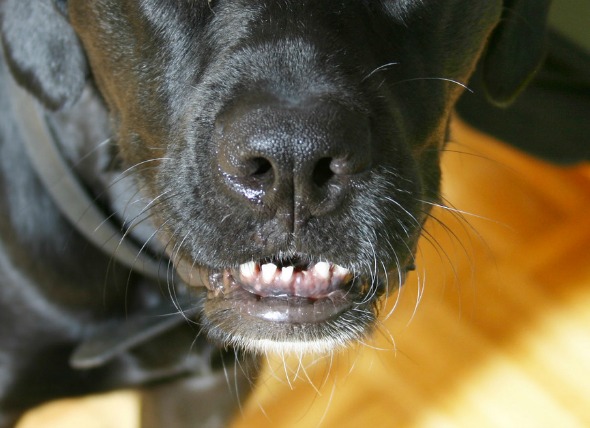

Dilated cardiomyopathy (DCM) is a disease of the heart muscle that is characterized by an enlarged heart that does not function properly. With DCM, both the upper and lower chambers of the heart become enlarged, with one side being more severely affected than the other. When the ventricle, or lower chamber, becomes enlarged, its ability to pump blood out into the lungs and body deteriorates. When the heart’s ventricle does not pump enough blood into the lungs, fluid begins to accumulate in the lungs. An enlarged heart soon becomes overloaded, and this often leads to congestive heart failure (CHF).
The incidence of DCM in dogs increases with age, usually affecting dogs between four and ten years old. DCM is also more common in certain breeds, such as the Doberman Pinscher, Boxer, Scottish Deerhound, Irish Wolfhound, Great Dane, Saint Bernard, Afghan Hound, and Cocker Spaniel.
The major symptoms of DCM include lethargy, anorexia, rapid and excessive breathing, shortness of breath, coughing, abdominal distension, and transient loss of consciousness. In some cases, dogs with preclinical (prior to the appearance of symptoms) DCM may be given a questionable diagnosis because it appears to be in fine health. On the other hand, a thorough physical exam can make apparent some of the subtle symptoms of DCM, such as pulse deficits, ventricular or supraventricular premature contractions (within the ventricles and above the ventricles, respectively), and slow capillary refill time. The dog’s breathing sounds may also have a muffled or crackling sound due to the presence of fluid in the lungs.
The cause of DCM in dogs is largely unknown. Nutritional deficiencies of taurine or carnitine have been found to contribute to the incidence of DCM in certain breeds such as Dobermans and Cocker Spaniels. Evidence also suggests that some breeds have a genetic susceptibility to the disease. In most breeds, male dogs are more susceptible to the disease than female dogs.
In addition to a thorough physical examination of the heart, certain medical tests are needed to confirm a diagnosis of DCM, and exclude other diseases. Radiographic imaging may reveal left ventricular and atrial enlargement, and the presence of fluid in the lungs. An electrocardiogram (EKG) may reveal atrial fibrillation and ventricular tachycardia (rapid beating of the heart). An ultrasound of the heart using echocardiograph imaging is required for a definitive diagnosis of DCM. This test examines the size of the heart, and the ability of the ventricular to contract. In the case of DCM, an echocardiograph will reveal an enlarged left ventricular and left atrial, and low contraction ability.
Treatment for DCM is heavily focused on improving the heart’s function, and on treating the symptoms of congestive heart failure. Drugs may be administered to enhance heart contraction and to slow down rapid beating, and diuretics may be used to control the accumulation of fluid in the lungs. Vasodilators, drugs that induce dilation of the blood vessels, and help the heart pump blood more effectively, are also usually part of the therapy for DCM. Except in cases where a dog is severely affected by the disease, long-term hospitalization should not be necessary.
Follow-up treatment for DCM will generally involve regular progress checks. Clinical examinations such as thoracic radiographs, blood pressure measurements, EKG’s and biochemical tests are all standard diagnostic tools for measuring progress.
You will also need to monitor your dog’s overall attitude, and stay alert to any outward signs of relapse, such as labored breathing, coughing, fainting, and lethargy. Despite therapy and conscientious care, most dogs with DCM have a poor prognosis. Your veterinarian will counsel you on your pet's likelihood for survival, based on the progression of the disease at the time of diagnosis, but in general, dogs with this condition are given 6 to 24 months to live. Dobermans are more severely affected by this disease, and will generally not survive longer than six months after the diagnosis is made. In this case, your veterinarian can advise you on ways in which you can make your dog's life as comfortable as possible.
 Muscle Tear in Dogs
Muscle Rupture in Dogs
A normal muscle can be str
Muscle Tear in Dogs
Muscle Rupture in Dogs
A normal muscle can be str
 Heart Attack in Dogs
Myocardial Infarction in Dogs
Much like in humans
Heart Attack in Dogs
Myocardial Infarction in Dogs
Much like in humans
 Foot/Toe Cancer in Dogs
Digital Squamous Cell Carcinoma in Dogs
Dogs can
Foot/Toe Cancer in Dogs
Digital Squamous Cell Carcinoma in Dogs
Dogs can
 'Mad Itch' Pseudorabies Virus Infection in Dogs
Suid Herpesvirus in Dogs
The pseudorabies virus i
'Mad Itch' Pseudorabies Virus Infection in Dogs
Suid Herpesvirus in Dogs
The pseudorabies virus i
 Tooth Dislocation or Sudden Loss in Dogs
Tooth Luxation or Avulsion in Dogs
Tooth luxation
Tooth Dislocation or Sudden Loss in Dogs
Tooth Luxation or Avulsion in Dogs
Tooth luxation
Copyright © 2005-2016 Pet Information All Rights Reserved
Contact us: www162date@outlook.com